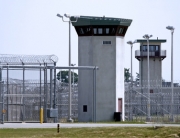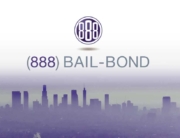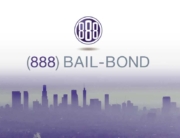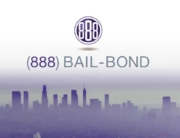The Santa Barbara County jail system consists of the Main Jail, the Santa Maria Substation and the Medium Security Facility (formerly known as the "Honor Farm").
SANTA BARBARA JAIL OPERATONS
When an inmate is brought in to any Santa Barbara facility, he or she is searched, checked medically, put in a holding cell while going through the booking process and then given a wristband that contains their personal information.
A special unit of trained personnel interviews and places inmates in general population or protective custody along with classifying them for housing. Behavior, membership in a particular gang and the crime committed all factor into this decision. The inmates are given blue or orange jumpsuits to wear and they are always under constant surveillance from camera systems, control rooms and staff.
Santa Barbara County also regulates its jail staff of 200 for their own safety by having them stop at each door, saying a code number and waiting for surveillance room personnel to identify them on camera. Lethal weapons are not allowed in the jails. Instead, staffers use tasers, pepper spray and handcuffs.
Although most of the hard core criminals are not premitted to talk to each other, they have found ways to do so, mostly by using sign language.
JAIL REHABILITATION PROGRAMS
The county jails offer a variety of services aimed at rehabilitating inmates so they don’t return. Job training, educational and counseling programs (like family and drug counseling) are available through the Inmate Services Unit. Inmates are also given the opportunity to work and earn money in the jails’ laundry facilities, print and metal shops. Other jobs include working in a bicycle rebuilding program, tailoring, culinary arts, landscaping and cleaning law enforcement facilities like the Isla Vista Foot Patrol substation.
The Homeless Inmate Discharge Planning Program helps indigent inmates get permanent housing once they’re released from jail. Another community outreach coordinator works with volunteers and faith-based groups to get newly released inmates transportation and transitional housing. Still another group, United Through Reading, tackles family issues and teaches inmates how to relate to their children in more positive ways. Prisoners record themselves reading books and then send them to their kids, who write letters back.
Finally, the Sheriff’s Drug Program gives incarcerated participants who want sobriety the opportunity to live separately from other inmates. In fact, the Santa Barbara Sheriff Department substance abuse treatment program is one of a kind. The residential treatment program started in 1996 with 12 participants. Now, there are over 140 enrollees who live in two housing units in the Main Jail and the medium security facility. Interestingly, the program is paid for by inmates, not tax-payers via a percentage of collect outgoing phone calls and revenues from the commissary. Inmates in the treatment program are required to undergo counseling, complete assignements and participate in group meetings. Many people who complete this program continue to seek treatment in outside groups when they leave jail, becoming both success stories in their communities and unlikely returns.
OVERCROWDING AND RECIDIVISM
Like jails throughout California and the rest of the country, during the last 15 years, court-mandated caps on inmate numbers and service programs have changed the way the Santa Barbara County jail system is run. The caps are based on the number of beds available and the annual operating cost of the jails. It costs $26,000 to house an inmate each year – nearly $36 million total – and studies show that more than 70 percent of those jailed will go on commit more crimes and be jailed here, once again.
Santa Barbara’s Medium Security Jail has not yet gone over its capacity limit, although it constantly struggles to keep its numbers down. Placing more guards at this jail, redistributing inmates and creating programs to fight recidivism like the substance abuse program has helped. This facility, having a capacity of 300 men and 100 women, can also house more than just low-level misdemeanor inmates, giving the county the option to send more prisoners their way. Pre-trial, sentenced and working inmates here have also get more privileges than their longer term Main Jail counterparts. Yard time, game rooms and libraries are more lax, promoting more of a sense of trust and responsibility.
The county also uses electronic monitoring, behavior earned early release and citations to keep inmate numbers down. If the total prison population rises above the cap and no one can be released on his or her own recognizance a sentenced inmate will be released early. Good behavior and willingness to work factor into the decision of who merits an early release. Violent criminals are not eligible. The county has the difficult position of deciding at what point financial cut offs must be made and there is no telling what impact Gov. Arnold Schwarzenegger's new law on early release will have on Santa Barbara.
Source: Noozhawk
Published: 02/23/2010















Follow Us
Facebook
Twitter
Google +1
LinkedIn
Youtube